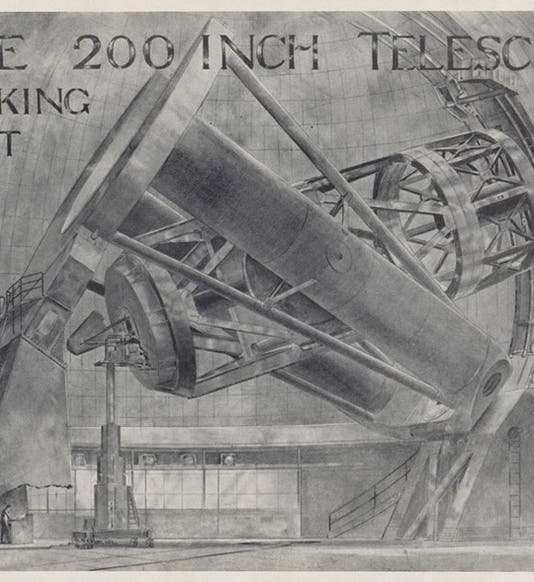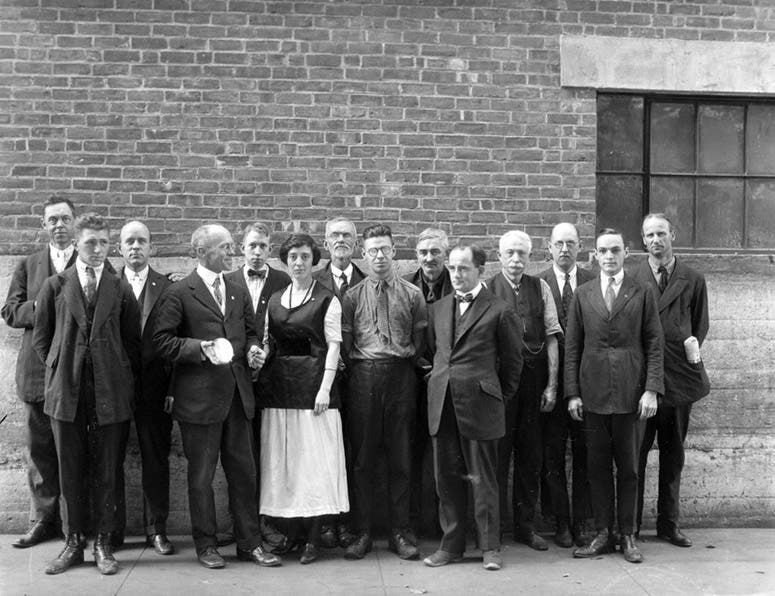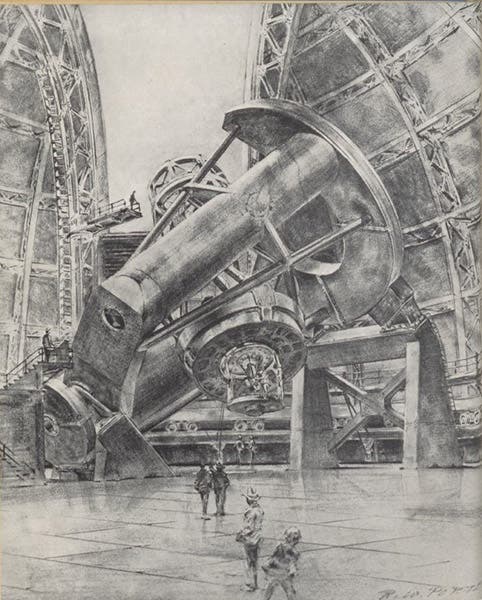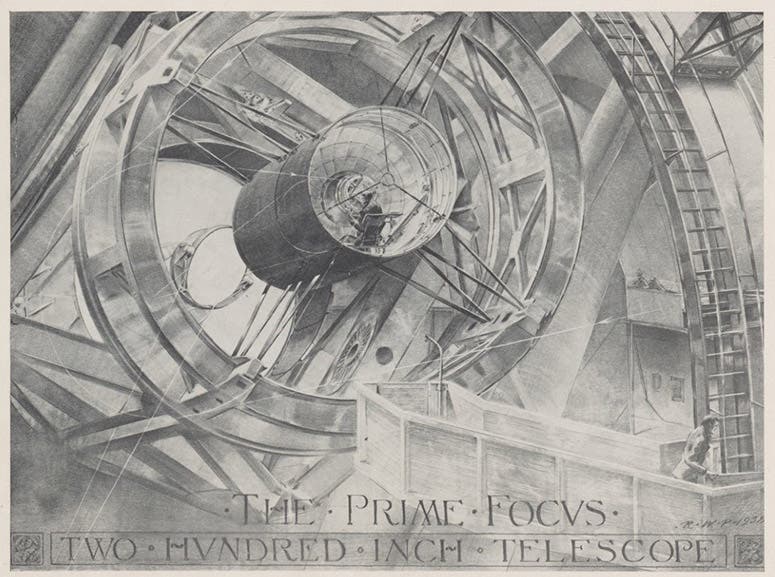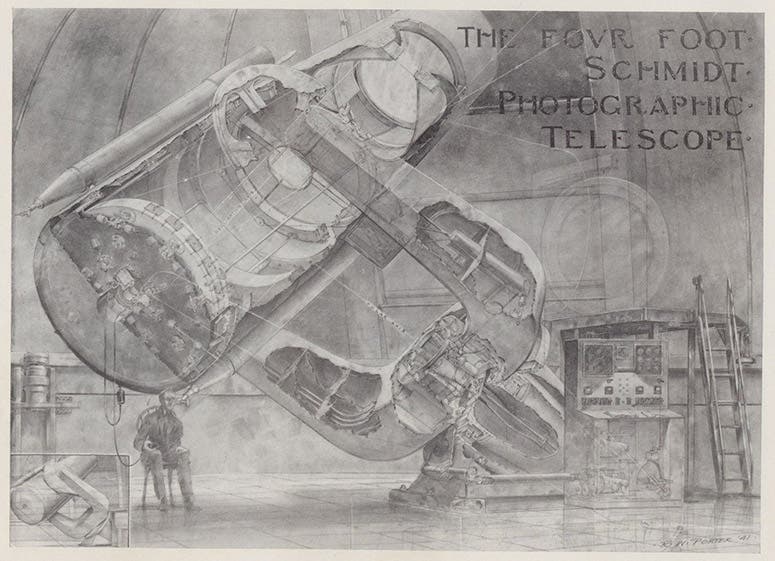Scientist of the Day - Russel W. Porter
Russell Williams Porter, an American artist, telescope maker, designer, and Arctic explorer, died Feb. 22, 1949, at the age of 77. Porter studied engineering and design in college in Vermont, and would study architecture at MIT, but before that, he suddenly developed an interest in Arctic exploration, and he participated in at least five expeditions between 1892 and 1904, including two led by Frederick Cook and two financed by Willian Ziegler. Porter functioned mainly as expedition artist, and many of his watercolors survive. We link to one here, Watercolor at 60 degrees below Zero, and some day we will write a post on this aspect of his career, illustrating it with paintings from the National Archives.
But today we leap forward to Porter's acquired interest in telescope making. This started sometime around 1912, and not only did he build his own 16-inch reflector from scratch, but he wrote a book about how to do so. Having moved back to his birthplace of Springfield, Vermont, he and a few like-minded souls founded a group of amateur telescope builders, calling themselves the Springfield Telescope Makers. In a group portrait of 1920 (second image, just above), Porter is the fourth from the left, in the front row, in profile. It is one of the few portraits we have of Porter (one other is below, sixth image). Porter and the Springfield club, in 1923, built a pink clubhouse named Stellefane on a hill on land owned by Porter, and in 1926, they sponsored a meeting, inviting other amateurs from across the country to gather to celebrate amateur telescope making. The gathering turned into an annual affair, and came to be called Stellafane, after the meeting house. Stellafane is still going strong and continues to meet every year at the clubhouse built by Porter and his friends.
But we still have not reached our Porter topic for today. Because of his architectural and design skill, his artistic ability, and his experience with telescopes, he was asked by George Ellery Hale in 1928 to join the team designing the "next-wave" telescope at Mount Palomar in California, the 200-inch reflector, now called the Hale Telescope. Porter is credited with designing the Art Deco dome and several of the cameras, which is pretty amazing, given his origins in amateur astronomy. But he is best known for a series of design drawings of the 200-inch telescope made as the design came together, incorporating the ideas of everyone involved. Many of these used a "cutaway" style that provides an incredible amount of structural and operational information (fifth image). Porter has often been credited with inventing the cutaway diagram, which of course he did not do – these were in common use in the sixteenth century, in the mining and engineering books of Georgius Agricola and Agostino Ramelli; you can see several in our post on Agricola. But Porter certainly brought a new elegance to the cutaway illustration, since he had such skill as an artist.
Most of our drawings today come from a magazine-like publication of 1947, The Photographic Giants of Palomar. It was issued in a spiral binder. Our copy has been removed from the binder and moved to a manila envelope, and looks rather ratty around the edges, but the prints are in great shape and are charming and wonderful, as you can see. For some reason I only photographed one of the cutaway drawings (fifth image); there are quite a few more. Our second portrait (sixth image) also comes from this pamphlet. Since it is still in copyright, we could not scan the entire publication. One of our Porter drawings (third image) was taken from a different book, The Glass Giant of Palomar, 1944, where it functions as the frontispiece. Note that all of the drawings were made before the telescope was opened for business in 1949.
Biographical information about Porter is hard to come by. There has been one book written about him, in 1976, but our Library does not own it. It would be interesting to know more about Porter’s formal education, and how he managed to appear on George Ellery Hale’s radar in 1928. Perhaps we will know more when we write our post about Russell Porter, Arctic explorer.
Dr. William B. Ashworth, Jr., Consultant for the History of Science, Linda Hall Library and Associate Professor emeritus, Department of History, University of Missouri-Kansas City. Comments or corrections are welcome; please direct to ashworthw@umkc.edu.

